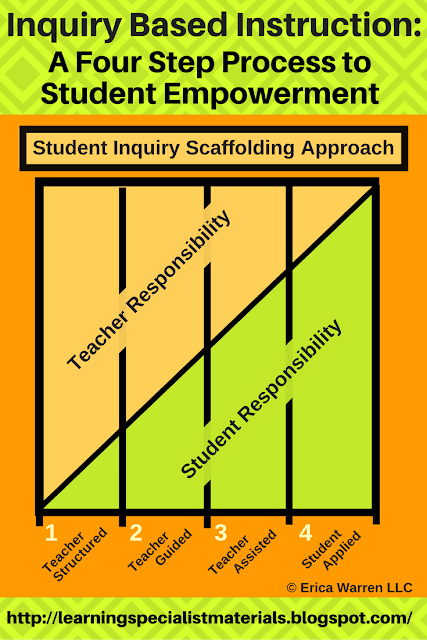This week I wanted to tell you about my online store, Good Sensory Learning. I’m Dr. Erica Warren, and I established this site so I could share all the materials that I have created over the last 20+ years as a learning specialist and educational therapist. When I first began my private practice, Learning to Learn, I had great difficulty finding fun and multisensory materials for my students that were effective and engaging. So back in 2005, I made it my mission to design and distribute high-end, remedial products as well as memorable, motivating lessons that bring delight to learning. If you would like to try a free sampling of my activities , CLICK HERE . How Are the Products Organized at Good Sensory Learning? You can download my Free Printable Catalog or you can browse the site using the grey “search all products” bar in the top right of any page with keywords such as dyslexia, working memory, and executive functioning. What’s more, drop down menus in the red banner allow you t...
Inquiry Based Learning Helps to Unite Some of the Principles of Pedagogy and Andragogy for Young Learners.
Inquiry-based learning is primarily a pedagogical method from a constructivist viewpoint, that was first developed in the 1960s. However, it teaches students the following principles from adult education:
- Learners can be self-directed
- Learners can be responsible for their own learning
- Learners can be internally motivated to learn
- Learners can bring their own experiences to the learning process
There are a number of different processes for teaching this approach and many use this way of teaching in the sciences. I personally love to use it with my struggling learners for math, writing as well as test preparation. I find that a well structured, scaffolding approach is best.
Step 1: Teacher/Learning Specialist Structured
In teacher structured the learning specialist controls the lesson or study session. Multisensory materials, manipulatives, and embedded memory strategies walk the student through the instruction.
In teacher structured the learning specialist controls the lesson or study session. Multisensory materials, manipulatives, and embedded memory strategies walk the student through the instruction.
Step 2: Teacher/Learning Guided
In teacher guided, the learning specialist provides paper, an ipad, or a dry erase board and pens to the student. Then the learning specialist provides the question or problem and guides the student through the process by having the student complete the question or problem steps themselves at the same time that the learning specialist demonstrates the process. Both the learning specialist and student writes out and then compares the steps or procedures. The learning specialist then encourages the student to self-generate a memory strategy so they can remember the process. We often create colorful, step by step strategy sheets that can be compiled into a “strategy manual” that the student can refer to as needed.
Step 3: Teacher/Learning Assisted
In teacher assisted the learning specialist writes out the question for the student. Then, the student is responsible for following their own procedures and memory strategies to reach the answer.
Step 4: Student Applied
In student applied, the student formulates their own approach to a new problem or concept they need to learn. They self generate multisensory steps to learning, implement their own memory strategies, and then teach the concept to the learning specialist.
If you would like to see an example of one of my multisensory math lessons click here
Moving students from dependent to independent ways of learning will make the learning process fun and also provide students the tools and ownership that they need to become successful lifelong learners.
In teacher guided, the learning specialist provides paper, an ipad, or a dry erase board and pens to the student. Then the learning specialist provides the question or problem and guides the student through the process by having the student complete the question or problem steps themselves at the same time that the learning specialist demonstrates the process. Both the learning specialist and student writes out and then compares the steps or procedures. The learning specialist then encourages the student to self-generate a memory strategy so they can remember the process. We often create colorful, step by step strategy sheets that can be compiled into a “strategy manual” that the student can refer to as needed.
Step 3: Teacher/Learning Assisted
In teacher assisted the learning specialist writes out the question for the student. Then, the student is responsible for following their own procedures and memory strategies to reach the answer.
Step 4: Student Applied
In student applied, the student formulates their own approach to a new problem or concept they need to learn. They self generate multisensory steps to learning, implement their own memory strategies, and then teach the concept to the learning specialist.
If you would like to see an example of one of my multisensory math lessons click here
Moving students from dependent to independent ways of learning will make the learning process fun and also provide students the tools and ownership that they need to become successful lifelong learners.
Dr. Erica Warren is the author, illustrator, and publisher of multisensory educational materials at Good Sensory Learning and Dyslexia Materials. She is also the director of Learning to Learn and Learning Specialist Courses.
· Blog: https://learningspecialistmaterials.blogspot.com/
· YouTube Channel: https://www.youtube.com/user/warrenerica1
· Podcast: https://godyslexia.com/
· Store: http://www.Goodsensorylearning.com/ & www.dyslexiamaterials.com
· Courses: http://www.learningspecialistcourses.com/
· Newsletter Sign-up: https://app.convertkit.com/landing_pages/69400
· Blog: https://learningspecialistmaterials.blogspot.com/
· YouTube Channel: https://www.youtube.com/user/warrenerica1
· Podcast: https://godyslexia.com/
· Store: http://www.Goodsensorylearning.com/ & www.dyslexiamaterials.com
· Courses: http://www.learningspecialistcourses.com/
· Newsletter Sign-up: https://app.convertkit.com/landing_pages/69400


Comments
Post a Comment